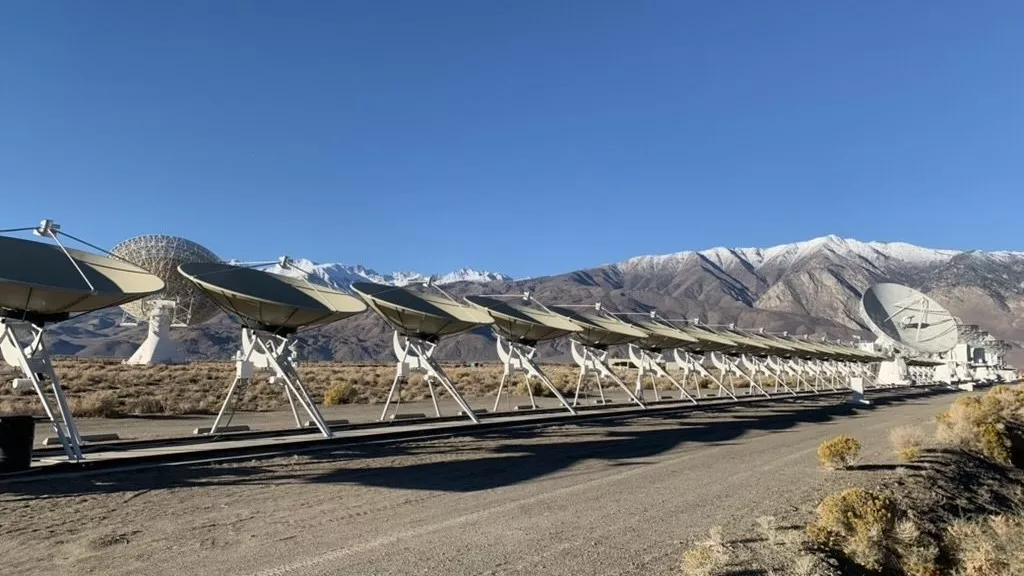Researchers weighed the Milky Way (and it's lighter than expected)

So-called fast radio bursts (FRBs) still intrigue scientists, but new observations of this strange phenomenon could help astronomers learn more about our own galactic neighborhood. In a new study, Caltech researchers were able to measure the mass of the Milky Way using one of these cosmic events.
The Mysterious FRBs
Fast radio bursts (FRBs) are among the most energetic explosions in the cosmos. These signals, which usually last only a few milliseconds, can indeed illuminate space with as much energy as 500 million stars. Thousands of these signals cross the universe every day and some reach our planet. Where do they come from ? For the time being, we still don't know exactly, but new installations allow us to see it a little more clearly.
One such facility – the Deep Synoptic Array (DSA) observatory – is operated by Caltech astronomers. This is a collection of 110 radio antennas installed in the Owens Valley in central California. Their goal is to locate the location in the sky of each observed event to help determine its origin.
Polling a large amount of sky means analyzing a lot of data, so the computers on the network process about 24 gigabytes per second. However, the game is worth the candle. In 2022, during its first year of operation, the DSA would indeed have helped astronomers discover no less than thirty FRBs with precise locations . Before its commissioning, astronomers had only traced about twenty since 2007.
Note also that the observatory continues to increase in power, with only 63 of the 110 parabolas planned for the moment.

Aerials of Owens Valley, California. Credits: Caltech
FRB and matter
That being said, these observations not only give astronomers clear clues about the nature of FRBs, but they also reveal the matter around us. “ It turns out that more than 80% of baryonic matter (the one you can see, touch) is invisible in the near universe ,” says Vikram Ravi, lead author of this new work. " This hidden matter is really scattered, which makes it difficult for our telescopes to see ."
As radio waves (especially those from FRBs) travel towards our antennas, certain frequencies will be delayed due to the presence of matter between the observer and the point of origin. Astronomers have recently used this principle to analyze the amount of matter in the Milky Way.
To do this, the researchers focused on FRB 20220319D . The latter comes to us from a galaxy named IRAS 02044+7048, located about 163 million light-years away . By knowing the distance and direction from which the burst originated, the team was able to measure how far the signal had dispersed before reaching the observatory's antennas. From then on, she was able to determine the amount of matter that the signals had passed through during their journey through the cosmos.

A galaxy “lighter” than expected
Based on these analyses, the researchers were able to determine that the mass of the Milky Way's circumgalactic medium (the halo of dust and gas that surrounds our Galaxy) was less than 100 billion solar masses . In other words, the total mass of the Milky Way would be less than 60% of the average of the galaxies.
Furthermore, the data revealed that the Milky Way actually contains much less "normal" matter than expected. While most of the universe is about 16% ordinary matter and 84% dark matter , ours is made up of less than 10% ordinary matter and more than 90% dark matter , according to their estimates.
This unexpected lightness could be explained by eruptions in the past of our galaxy. " These results strongly support scenarios predicted by galaxy formation simulations where feedback processes expel matter from galaxy halos ," the astronomer continues in a statement . These processes are “ fundamental to the formation of galaxies, where matter is transported and expelled from galaxies in cycles ,” he adds.
Source: websites

